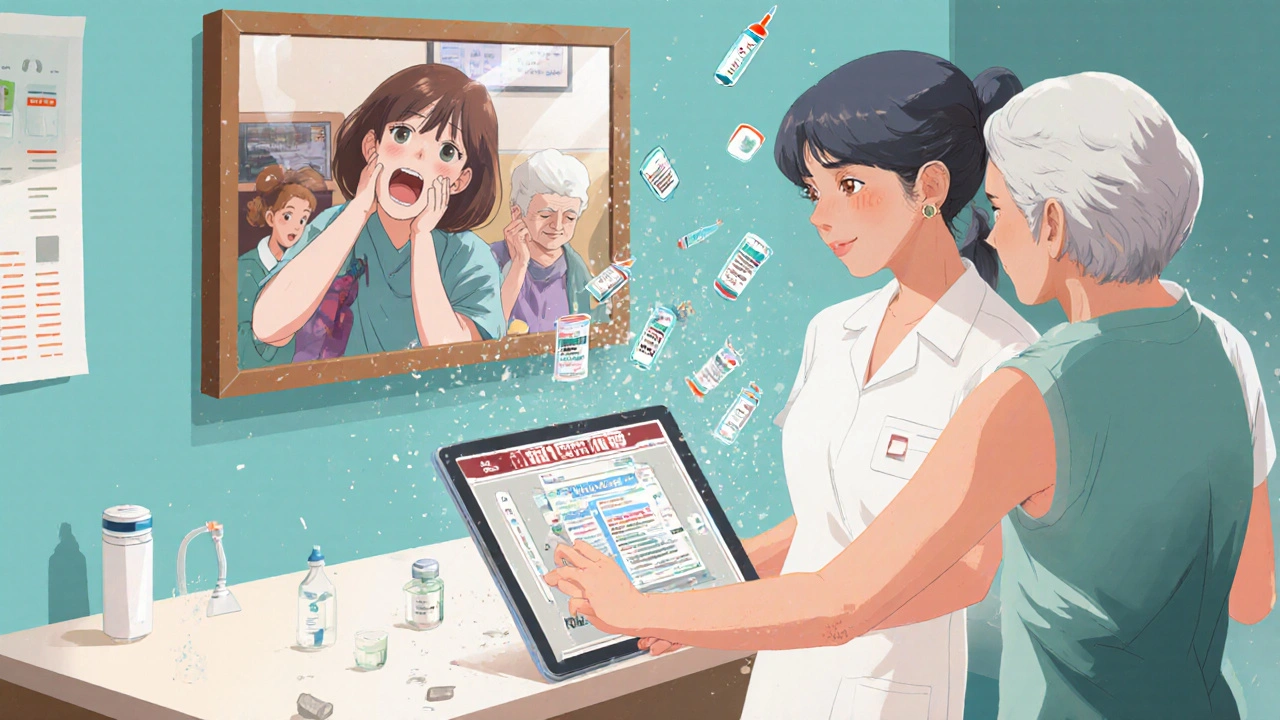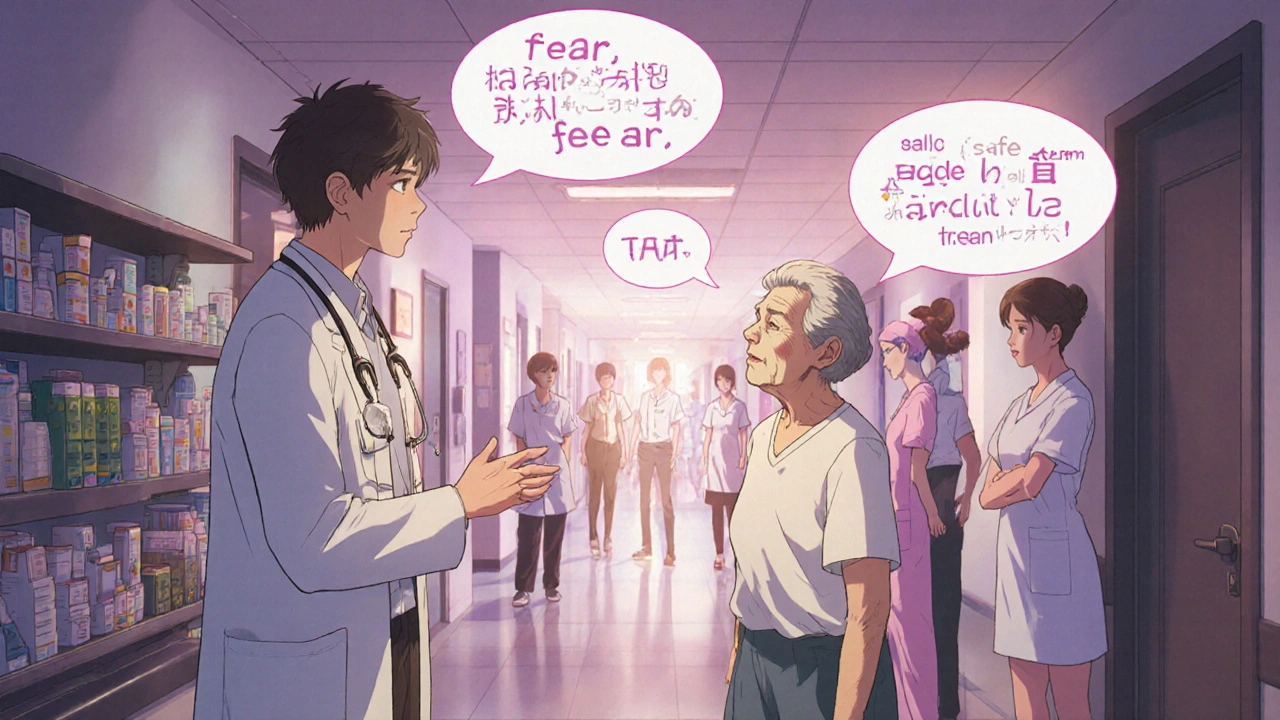When patients leave the hospital or clinic, they often don’t remember what the doctor told them. Not because they weren’t listening - but because the message wasn’t delivered in a way they could understand. This isn’t just a minor inconvenience. Poor communication in healthcare is linked to 80% of medical errors, according to The Joint Commission. It’s also tied to 15-20% of adverse patient outcomes, as reported by the Agency for Healthcare Research and Quality. That’s not a statistic. That’s real people - missed diagnoses, unnecessary readmissions, avoidable complications.
Why Communication Training Isn’t Optional Anymore
Healthcare systems used to treat communication like a soft skill - something nice to have if you had extra time. Now, it’s a core requirement. The 2010 Affordable Care Act pushed patient-centered care to the front. The pandemic made it undeniable: when public health messaging fails, lives are lost. Hospitals now face financial penalties if patient satisfaction scores drop, and 30% of Medicare reimbursements are tied to how well they communicate with patients. This isn’t about being nice. It’s about being effective. Studies show that doctors who complete communication training see 30% fewer malpractice claims. Patients who feel heard are more likely to follow treatment plans. They show up for appointments. They take their meds. They ask questions. And when they do, outcomes improve.What These Programs Actually Teach
Institutional generic education programs aren’t one-size-fits-all. They’re built around real problems seen in clinics and hospitals. Here’s what they cover:- Eliciting the patient’s story - Not just asking “What’s wrong?” but letting patients tell their full experience without interruption. Research shows physicians average only 13.3 seconds before cutting patients off - even after training.
- Responding with empathy - It’s not saying “I’m sorry you’re feeling this way.” It’s acknowledging fear, frustration, or confusion in a way that makes patients feel understood.
- Setting boundaries - Nurses and providers report burnout drops by up to 40% when they learn how to say “no” respectfully without guilt. This isn’t about being cold - it’s about sustainable care.
- Managing difficult conversations - Breaking bad news, discussing end-of-life care, correcting misinformation about vaccines. These aren’t theoretical exercises. Programs use real patient scenarios.
- Interprofessional communication - 65% of communication failures happen between nurses, pharmacists, doctors, and social workers. Training now includes team-based drills to align language and expectations.
How Different Programs Compare
Not all training is the same. Some are short, some are deep. Some are free. Others cost thousands. Here’s how they stack up:| Program | Focus Area | Format | Credits/Cost | Key Strength | Limited By |
|---|---|---|---|---|---|
| Mayo Clinic (CNE) | Point-of-care skills | Online, 3.5 credits | $0 (free for staff) | 12 standardized patient videos show real-life boundary-setting and non-verbal cues | Doesn’t cover policy or media |
| University of Maryland (PEP) | Patient-centered communication | Workshop, 6.5 AMA credits | Varies by institution | 23% higher patient satisfaction scores than generic training | Lacks interprofessional team training |
| SHEA | Infection control communication | Online modules | $75-$125 | Only program teaching social media response to vaccine misinformation | Assumes prior advocacy experience |
| Northwestern University | Mastery learning | Simulation-based | Part of med school curriculum | 37% higher skill retention after 6 months | Requires expensive simulation labs |
| UT Austin (HCTS) | Public health emergencies | Free, self-paced | Free | Only program focused on pandemic response planning | Not clinically focused |
What’s clear? If you’re a nurse dealing with angry families, Mayo’s boundary-setting module helps. If you’re an infection control specialist fighting misinformation online, SHEA’s social media module is unmatched. If you’re a medical student learning to deliver bad news, Northwestern’s simulations stick.

Where Programs Fall Short
Even the best programs have gaps. A 2021 JAMA review found only 12% of programs track whether skills are actually used six months later. That’s a big problem. Training doesn’t work if it’s forgotten the next week. Many programs ignore health disparities. AHRQ’s 2023 report showed a 28% communication satisfaction gap between white patients and minority patients. Only 74% of new programs now include cultural humility training - meaning too many providers still don’t know how to adjust language, tone, or pace for different cultural backgrounds. Another issue? Time. A 2023 AAMC survey found 58% of healthcare workers said they know the right communication techniques - but they don’t have time to use them in 15-minute appointments. That’s why the most successful programs embed prompts into electronic health records. A simple pop-up: “Ask: What’s your biggest concern today?” can change everything.How to Make Training Stick
Training that works follows a clear path:- Assess first - Use patient surveys to find the biggest communication gaps. Is it language barriers? Rushed visits? Unclear discharge instructions?
- Pick 3-5 skills - Don’t try to fix everything. Focus on what will move the needle. For many, that’s listening without interrupting and checking for understanding.
- Train with real scenarios - Role-play with actual patient stories from your clinic. Generic scripts don’t work.
- Embed it in workflow - Add communication checklists to EHRs. Have team huddles where staff share one thing they learned.
- Find champions - Identify one respected clinician in each unit to model the behavior. People follow leaders, not lectures.
Northwestern’s program saw 73% adoption when they appointed communication champions from each department. Mayo Clinic lets senior physicians lead 60% of sessions. That’s not coincidence. It’s strategy.

The Future Is Here - And It’s Digital
The field is evolving fast. In 2024, the Academy of Communication in Healthcare started using AI tools to give instant feedback on recorded patient interactions. Early results show learners pick up skills 22% faster. Telehealth is changing the game too. Thirty-five percent of new programs now include virtual communication modules - teaching providers how to read body language through a screen, manage technical glitches, and build trust without physical presence. And the push for mandatory training is growing. The National Academy of Medicine called communication a “core healthcare function” in 2023. If that becomes policy, every clinician - from nurses to pharmacists - will need to complete training. That’s a huge shift.What You Can Do Today
You don’t need to wait for your hospital to launch a program. Start small:- Watch Mayo Clinic’s free online course. It’s only 3.5 hours and gives you practical tools.
- Use the “Ask, Tell, Ask” method: Ask what the patient knows, tell them in plain language, then ask them to repeat it back.
- Practice silence. After asking a question, wait five seconds. Let the patient fill the space.
- Ask your team: “What’s one communication moment that made you feel frustrated lately?”
Communication isn’t about being perfect. It’s about being present. It’s about listening more than you speak. It’s about making sure the person across from you walks away feeling seen - not just treated.
Are healthcare communication programs only for doctors?
No. These programs are designed for the entire care team - nurses, pharmacists, social workers, receptionists, and even administrative staff. Communication breakdowns often happen between team members, not just between doctors and patients. Programs like SHEA target infection control specialists, while others focus on nursing teams or emergency department staff. Everyone who interacts with patients benefits from better communication skills.
Do these programs actually improve patient outcomes?
Yes. Studies show patients whose providers complete communication training are more likely to follow treatment plans, have fewer readmissions, and report higher satisfaction. One study found a 23% increase in patient satisfaction scores after using the University of Maryland’s PEP program. Hospitals with strong communication training also see 30% fewer malpractice claims. These aren’t theoretical benefits - they’re measurable results tied to real-world care.
Why do some healthcare workers resist communication training?
Some feel it’s “soft” compared to clinical skills. Others worry it adds time to already packed schedules. A small percentage (15-20%) believe communication can’t be taught - they think you’re either good at it or you’re not. But research shows these skills can be learned. The key is making training relevant, practical, and embedded into daily workflow. When senior staff model the behavior, resistance drops.
Can communication training reduce burnout?
Absolutely. Nurses and providers who learn to set clear boundaries, manage difficult conversations, and respond with empathy report lower emotional exhaustion. One nurse practitioner reported a 40% drop in burnout after completing Mayo Clinic’s boundary-setting module. When you feel equipped to handle tough moments - instead of dreading them - your stress decreases.
Are these programs accessible to rural or low-resource hospitals?
Some are. The UT Austin Health Communication Training Series offers free, self-paced online modules that require no special equipment. Mayo Clinic’s course is free for staff. But many high-quality programs require simulation labs or dedicated staff - resources that rural hospitals often lack. The gap is real: only 22% of rural facilities have formal communication training. Solutions are emerging through partnerships and federal grants, but access remains uneven.
How long does it take to see results from communication training?
Changes in behavior often show up within 3-6 weeks if training is reinforced. But full integration takes 3-6 months. Skills plateau without ongoing practice. The most successful programs include monthly refreshers, peer feedback sessions, and EHR prompts. Long-term retention improves dramatically when training is tied to performance reviews or team goals.


Conor McNamara
November 17, 2025 AT 11:07steffi walsh
November 17, 2025 AT 23:28Leilani O'Neill
November 18, 2025 AT 01:10Riohlo (Or Rio) Marie
November 18, 2025 AT 20:26Holly Powell
November 20, 2025 AT 16:58Emanuel Jalba
November 20, 2025 AT 20:28Heidi R
November 20, 2025 AT 21:22Brenda Kuter
November 22, 2025 AT 06:23